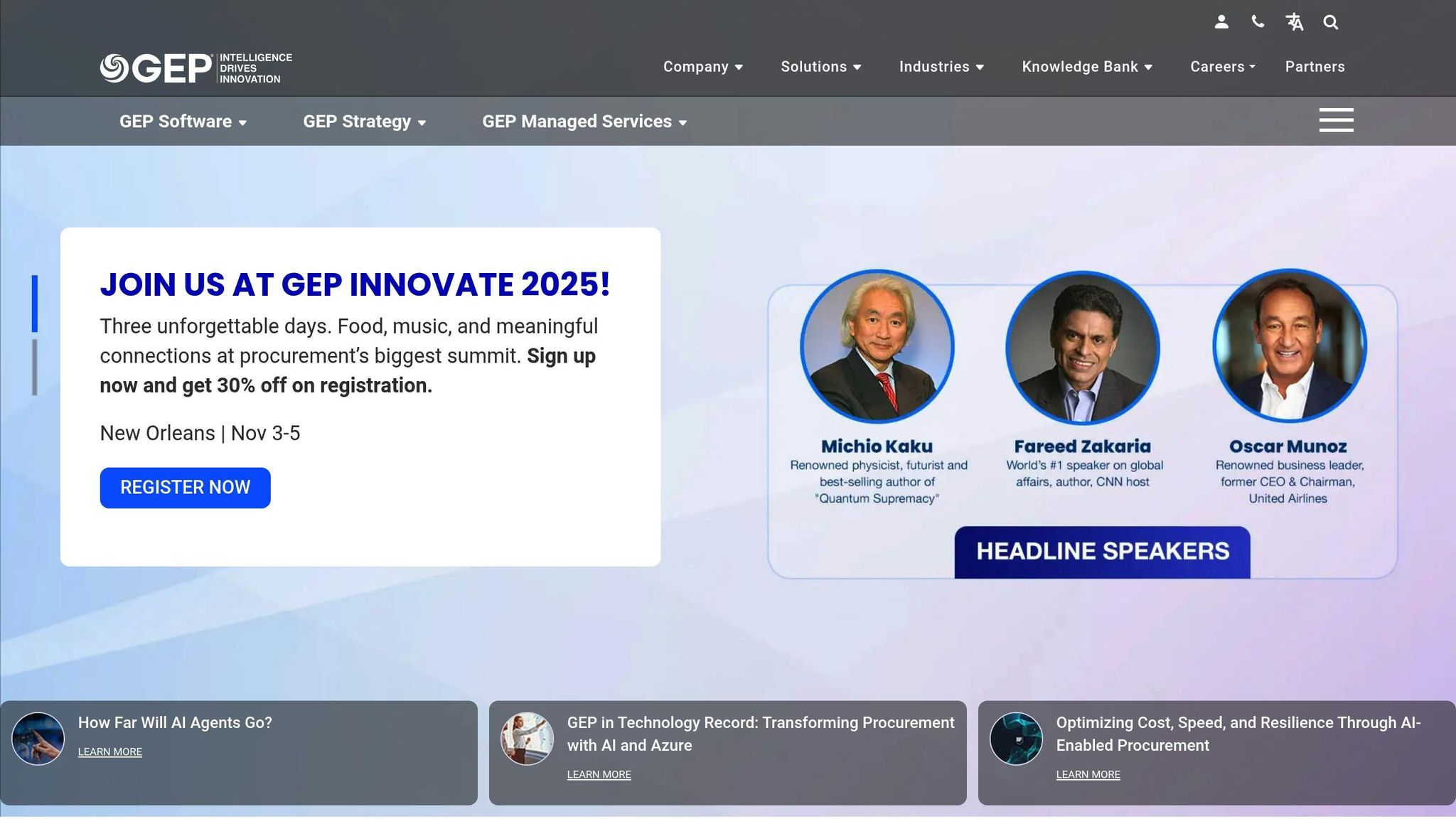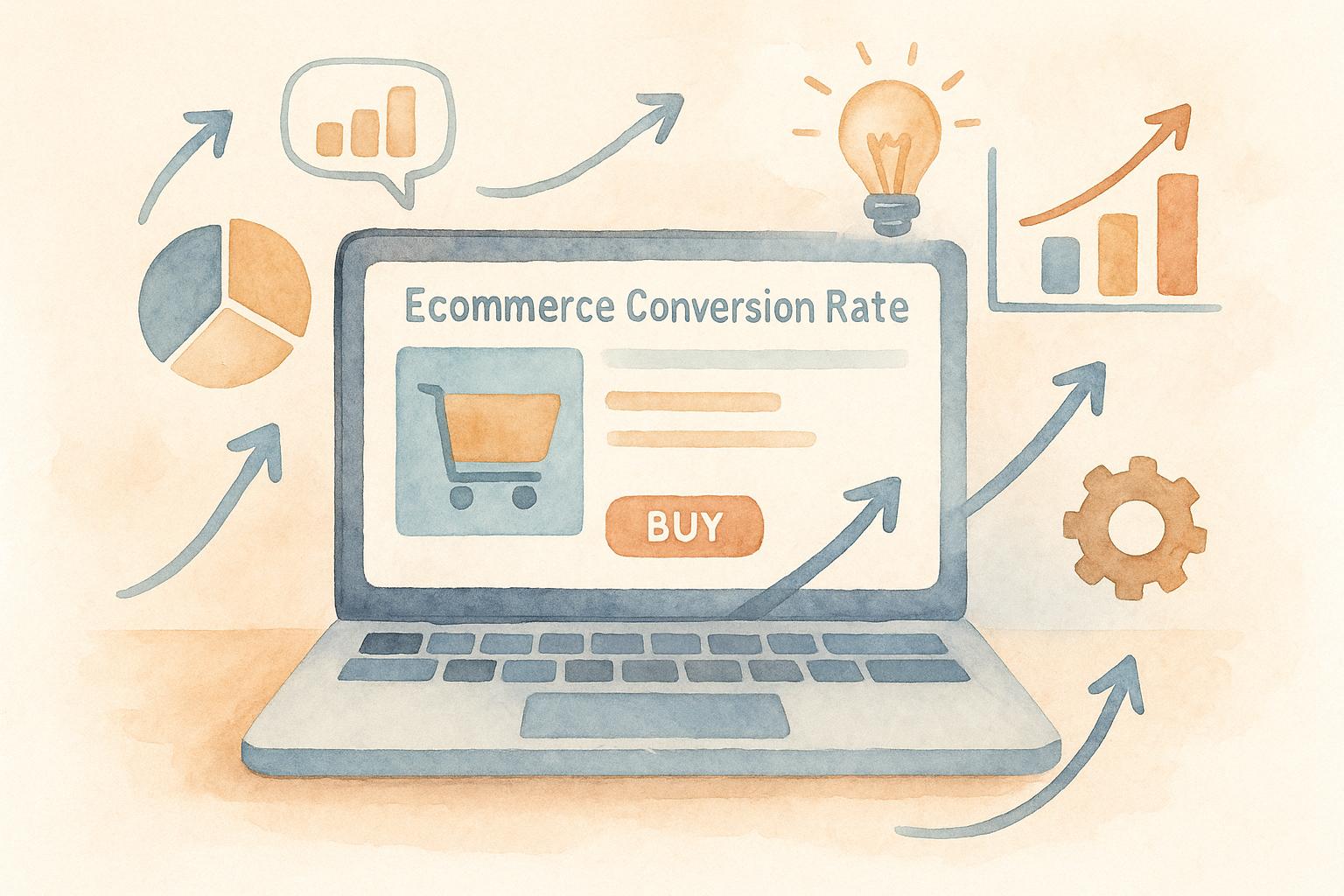Australian FMCG companies are under pressure from rising costs, inflation, and shifting consumer demands. The solution? Smart cost-cutting strategies that lower expenses without sacrificing product quality or customer loyalty. This article explores how top brands in the sector are achieving this balance through targeted improvements in supply chains, manufacturing processes, and packaging.
Key takeaways include:
Supply chain optimisation: Streamlining inventory and logistics to reduce waste and improve efficiency.
Lean manufacturing and automation: Minimising production waste and using automation to cut labour costs.
Eco-friendly packaging: Reducing material use and energy costs while meeting consumer expectations.
These strategies are helping companies save money while staying competitive in a challenging market. Mid-sized businesses can use these lessons to navigate rising costs and maintain growth.
Seven Effective Cost Reduction Strategies for FMCG Packaging | GEP

Cost Pressures Facing FMCG Companies
Australia’s fast-moving consumer goods (FMCG) sector is grappling with long-term cost pressures that require thoughtful strategies to sustain profitability and remain competitive. These pressures stem from deep structural changes in both economic conditions and supply chain dynamics. Let’s break down the key challenges shaping this landscape.
Economic and Operating Challenges
The rising cost of raw materials is a pressing issue for FMCG companies, with packaging expenses also climbing steadily. Energy prices are another growing burden, pushing up manufacturing costs. At the same time, wage growth and ongoing talent shortages are driving labour costs higher.
Inflation has hit transport and logistics hard, with fuel surcharges and labour shortages further inflating costs. On top of this, stricter regulations - such as those requiring more recycled materials and detailed sustainability reporting - are adding compliance expenses, which can be especially tough for mid-sized businesses to absorb. Higher interest rates are also squeezing companies that rely heavily on financing, particularly those with large inventories or long production cycles.
Supply Chain and Market Changes
External factors, especially shifts in supply chains and consumer preferences, are adding to the cost challenges.
Global supply chain disruptions have made costs more volatile, leading many Australian FMCG companies to keep larger inventory reserves as a buffer. While the shift to shorter, localised supply chains offers better reliability, it often comes with higher initial investments and increased per-unit costs.
Changing consumer demands are also reshaping cost structures. The growing appetite for premium and organic products requires different sourcing and production methods, which tend to involve higher quality control and manufacturing expenses.
The rise of e-commerce has transformed distribution models. Direct-to-consumer sales are now a vital revenue stream, but last-mile delivery is significantly more expensive compared to traditional retail distribution.
Sustainability expectations from both consumers and major retailers are another factor driving up costs. Implementing eco-friendly packaging standards, for example, adds immediate expenses while aligning with broader environmental goals.
Currency fluctuations, particularly in the Australian dollar, further complicate matters. Even slight changes in exchange rates can heavily impact the cost of imported ingredients, packaging, and equipment - posing a serious challenge for businesses with high import dependency.
These combined pressures highlight the limitations of conventional cost management approaches. Understanding these challenges is crucial for exploring the strategies FMCG leaders are adopting to navigate this complex environment effectively.
Case Studies: How Companies Cut Costs Successfully
Looking at how some Australian FMCG leaders have tackled rising costs offers clear insights into strategies that deliver measurable savings - all while maintaining quality.
Supply Chain Improvements
Woolworths Group has embraced data analytics and inventory optimisation to fine-tune its demand forecasting. By aligning stock levels more closely with customer needs, they've managed to cut down on waste and improve inventory management.
Arnott's Biscuits took a different approach by consolidating multiple regional warehouses into centralised hubs. On top of that, they introduced a vendor-managed inventory system, which simplified their logistics and reduced the complexities of storage.
Lean Manufacturing and Automation
Lion Dairy & Drinks adopted lean manufacturing techniques to streamline production and cut waste. They also implemented predictive maintenance practices, which helped minimise unplanned downtime and improve overall efficiency.
Sanitarium turned to robotic automation for tasks like packaging, palletising, and quality inspections. This shift not only reduced the reliance on manual labour but also enhanced product consistency and created a safer work environment.
Eco-Friendly Packaging and Energy Savings
Several FMCG companies have also made strides in sustainability while cutting costs. Blackmores switched some product lines to recyclable aluminium, Freedom Foods installed solar panels and upgraded to energy-efficient lighting, and Bega Cheese introduced lighter-weight packaging to improve transport efficiency. While these changes came with higher upfront costs, they’ve boosted logistics efficiency, supported environmental goals, and added to product appeal.
These examples highlight how targeted investments, streamlined processes, and sustainable practices can drive cost savings. Up next, we’ll explore how these strategies compare and which ones might work best for mid-sized FMCG businesses.
Comparing Different Cost-Cutting Methods
Cost-cutting strategies can differ greatly depending on a company’s operations, resources, and long-term objectives.
Cost-Cutting Strategy Comparison
FMCG companies often rely on specific strategies to manage costs effectively. For instance, supply chain optimisation focuses on improving logistics and inventory systems with minimal disruption to daily operations. In contrast, adopting automation or lean manufacturing methods typically requires a larger upfront investment and comprehensive staff training. However, these approaches often lead to substantial savings over time. Another popular method is transitioning to sustainable packaging. This not only addresses environmental concerns but can also help reduce overall operational expenses.
The most successful companies often combine these strategies - balancing supply chain improvements, manufacturing efficiencies, and sustainability initiatives - to minimise risks while maximising gains.
This approach highlights the importance of maintaining quality and brand value even during cost-cutting efforts.
Maintaining Brand Value While Cutting Costs
Reducing costs should never come at the expense of quality or brand reputation. Companies must focus on operational efficiencies that uphold product standards. As demonstrated in earlier case studies, maintaining customer trust is just as important as achieving operational savings.
Clear and transparent communication plays a key role during these transitions. Framing efficiency improvements as positive developments can help reassure customers. Additionally, careful planning - such as implementing changes during quieter periods - ensures that supply and service levels remain stable. Engaging employees through retraining and involvement initiatives also supports smoother transitions while preserving valuable institutional knowledge.
When carried out thoughtfully, cost-cutting measures can do more than just improve operational performance - they can also reinforce brand value by ensuring consistent quality, dependable delivery, and added environmental benefits.
Key Lessons and Practical Tips
Cutting costs effectively isn’t just about slashing expenses - it requires thoughtful planning and strategic execution.
Main Lessons from the Case Studies
Leadership commitment and long-term planning matter. The most successful cost-cutting initiatives started with leadership teams that committed to detailed planning and gained stakeholder support before making changes.
Data-driven decisions minimise disruption. Organisations that monitored key metrics - like energy use per unit or supplier delivery times - achieved smoother transitions and better results by implementing changes during quieter periods.
Frontline workers hold valuable insights. Employees directly involved in production often spot inefficiencies others miss. By creating formal channels for their feedback, businesses have uncovered opportunities to streamline processes and reduce waste.
These lessons form the foundation for smarter, more targeted operational improvements.
Practical Advice for Mid-Sized FMCG Businesses
For Australian mid-sized FMCG companies, tackling supply chain hurdles and rising costs requires tailored strategies. Here's how to get started:
Strengthen local supplier relationships. Working with nearby suppliers can offer better payment terms and reduce supply chain risks.
Prioritise energy efficiency. With electricity prices climbing, energy audits can uncover immediate savings. Simple steps like switching to LED lighting or scheduling equipment use during off-peak hours can cut costs without affecting production quality.
Adopt technology step by step. Instead of diving into full-scale automation, introduce tools like inventory management software or production scheduling systems. These gradual changes often deliver quick benefits with minimal disruption.
Link cost reduction to sustainability. Australian consumers are drawn to eco-friendly brands. By optimising packaging to use less material and reduce costs, you can improve both your financials and your reputation.
How Uncommon Insights Can Help

To navigate cost-cutting while maintaining growth, a structured approach is essential. That’s where Uncommon Insights steps in.
Our Comprehensive Growth Audit takes a deep dive into your operations, identifying cost-saving opportunities that align with your long-term goals. Using our Unit Economics Analysis Framework, we pinpoint where money is being spent and which activities deliver the best returns - helping you cut costs without jeopardising profitability.
With tailored roadmaps and weekly deliverables, we work closely with your team to implement changes step by step. This hands-on, collaborative process ensures your cost-saving efforts strengthen your competitive edge in the Australian market rather than weaken it.
FAQs
What are some effective ways mid-sized FMCG businesses can reduce costs without compromising product quality?
Mid-sized FMCG businesses can cut costs without compromising product quality by honing in on efficiency and smart sourcing practices. This might involve simplifying supply chains, reducing waste wherever possible, and implementing recognised quality management systems like ISO or HACCP to maintain consistent standards.
Focusing on preventive quality measures and embracing automation or other technological advancements can also lower operational costs while safeguarding product excellence. By adopting these strategies, businesses can strike a balance between keeping expenses in check and delivering the quality their customers rely on.
How can FMCG companies adopt sustainable packaging while keeping costs under control?
FMCG companies can move towards sustainable packaging by prioritising clever design choices. Reducing the size and weight of packaging not only uses fewer materials but also trims down transportation costs, making it a win-win for both the environment and the bottom line. Opting for environmentally friendly materials - like recyclable, biodegradable, or compostable options such as paper, bamboo, or cornstarch - can further lower the ecological footprint without causing a major spike in costs.
Equally important is fostering strong partnerships with suppliers and refining packaging processes. These efforts can help businesses stay cost-effective while embracing sustainable practices, keeping them competitive and meeting the growing demand for eco-conscious products in Australia.
How can Australian FMCG companies use data analytics to streamline their supply chains and cut costs?
Australian FMCG companies have a powerful tool at their disposal: data analytics. By tapping into AI-driven demand forecasting, businesses can accurately predict seasonal trends. This means fewer instances of overstocking, which not only saves on storage costs but also ensures products are available when customers need them.
Real-time tracking paired with predictive analytics takes logistics to the next level. Companies can fine-tune transportation routes, cut down on waste, and reduce overall transport expenses. These smart, data-focused strategies don’t just streamline supply chains - they also build resilience. This allows businesses to respond swiftly to shifting market demands while keeping profits steady.



